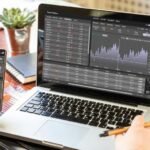Breakouts are among the most sought-after opportunities in Forex trading, signaling the potential for significant price movements. However, not all breakouts lead to sustained trends. Many are “fake breakouts,” where prices breach a level momentarily before reversing sharply. Spotting and avoiding these false signals is a critical skill for traders looking to protect their capital and improve their win rate.
Understanding Fake Breakouts
A fake breakout occurs when a currency pair briefly moves beyond a key support or resistance level but fails to maintain momentum, often reversing into its previous range. These false signals are common in volatile markets, where large price moves can lure traders into entering positions prematurely. They’re often fueled by market noise, stop-hunting by institutional players, or overreaction to short-term events.
Signs of a Potential Fake Breakout
To differentiate between a genuine and a fake breakout, traders must carefully evaluate market conditions. One key factor is volume. Genuine breakouts are typically accompanied by strong trading volume, confirming market interest in the new price level. Conversely, a breakout on low volume suggests a lack of conviction, increasing the likelihood of a reversal.
Price action leading up to the breakout is another important clue. Extended consolidation or tight ranges before the breakout often indicate pent-up demand, increasing the chances of a genuine move. On the other hand, erratic or choppy price movements in Forex trading before the breakout might signal indecision, making a fake breakout more likely.
Additionally, traders should be cautious of breakouts that occur during low-liquidity periods, such as during Asian trading hours or near the end of a session. Thin markets are more prone to false moves due to limited participation.
Tools and Techniques for Identifying Fake Breakouts
Successful traders rely on a combination of technical analysis and market awareness to spot fake breakouts. For instance, confirmation is a critical concept. Instead of entering a trade immediately after a breakout, wait for the price to close decisively beyond the support or resistance level on a higher timeframe, such as a 1-hour or 4-hour chart. This approach reduces the risk of being caught in a false move.
Indicators like the Relative Strength Index (RSI) or Moving Average Convergence Divergence (MACD) can also provide valuable insights. If the breakout isn’t supported by corresponding momentum on these indicators, it might be a false signal in Forex trading.
Furthermore, understanding the broader market context is crucial. Breakouts that align with a prevailing trend are more likely to be genuine, while those that counter the trend are often short-lived.
The Psychological Trap of Fake Breakouts
Fake breakouts are not just technical challenges—they’re psychological traps. Traders often feel a strong urge to act quickly when prices breach key levels, driven by the fear of missing out (FOMO). This emotional response can lead to premature entries and significant losses when the price reverses.
The best defense against this trap is patience. By waiting for confirmation and analyzing market conditions, traders can avoid the emotional pitfalls of fake breakouts and make more informed decisions.
A Practical Example
Consider the EUR/USD pair trading near a resistance level of 1.2000. The price briefly spikes to 1.2020 during low-volume hours, appearing to break out. However, volume data shows no significant increase, and RSI indicates overbought conditions. The price soon falls back below 1.2000, confirming the move as a fake breakout. A trader who waited for confirmation avoided a losing trade, while those who acted impulsively likely incurred losses.
Building a Strategy to Avoid Fake Breakouts
Developing a strategy to identify and avoid fake breakouts involves a combination of technical tools, market awareness, and psychological discipline. Start by identifying key support and resistance levels with clear historical significance. Combine this with volume analysis and confirmation techniques to validate breakouts before entering a trade.
Equally important is adopting a robust risk management plan. Even with careful analysis, no strategy is foolproof. Using stop-loss orders and managing position sizes ensures that any losses from unexpected reversals remain manageable.Spotting fake breakouts in Forex markets is both an art and a science. It requires a keen understanding of price action, careful analysis of volume and market context, and the discipline to wait for confirmation. By mastering these skills, traders can avoid costly mistakes and increase their chances of success in the dynamic world of Forex trading. Fake breakouts may be common, but with the right approach, they can be turned into opportunities rather than pitfalls.



